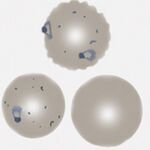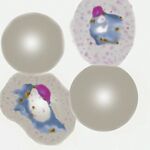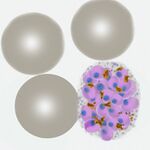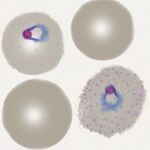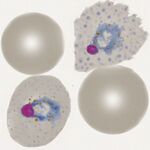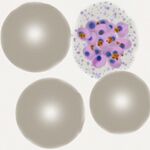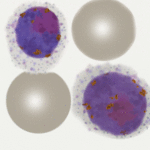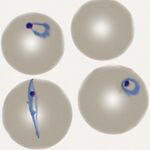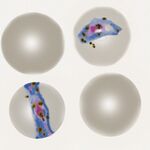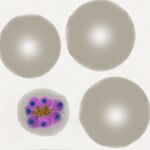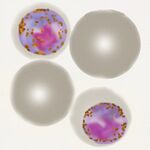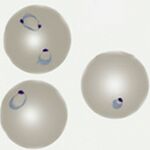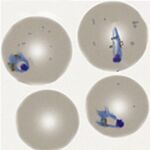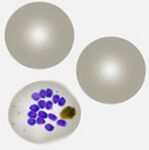Species Identification: Difference between revisions
From haematologyetc.co.uk
No edit summary |
No edit summary |
||
| Line 110: | Line 110: | ||
---- | ---- | ||
'''''Plasmodium knowlesi''''' | {| class="wikitable" style="border-style: solid; border-width: 5px; color:black" | ||
|colspan="1" style = "font-size:90%; color:black; background: #bcd4e6"|'''''Plasmodium knowlesi''''' | |||
|} | |||
</div> | |||
<gallery mode="nolines" widths=150px heights=150px> | |||
File:PKETc.jpg|<span style="font-size:80%">''Early trophozoite''</span>|link={{filepath:PKETc.jpg}} | |||
File:PKLTc.jpg|<span style="font-size:80%">Late trophozoite</span>|link={{filepath:PKLTc.jpg}} | |||
File:PKSc.jpg|<span style="font-size:80%">Gametocyte</span>|link={{filepath:PKSc.jpg}} | |||
File:PKGc.jpg|<span style="font-size:80%">Gametocyte</span>|link={{filepath:PKGc.jpg}} | |||
</gallery> | |||
---- | |||
| Line 117: | Line 126: | ||
*Very limited geographical distribution within S.E Asia | *Very limited geographical distribution within S.E Asia | ||
*Small fine ring forms resemble those of ''P.falciparum'' | *Small fine ring forms resemble those of ''P.falciparum'' and may have high parasite count | ||
*Later rings are more solid or elongated similar to ''P.malariae'' | *Later rings are more solid or elongated similar to ''P.malariae'', although faint dots may be present | ||
*Schizonts & gametocytes are often present and may resemble ''P.malariae'' but are less "neat" | |||
*Schizonts & gametocytes resemble ''P.malariae'' but are less "neat" | |||
*Characteristically red cell size is unaffected, although distortion may be seen | *Characteristically red cell size is unaffected, although distortion may be seen | ||
Revision as of 18:34, 22 February 2024
| Plasmodium falciparum |
Summary
- Small and fine ring forms, may have accolé (edge) forms or multiple parasites per cell
- Maurer's dots and clefts are seen in late trophozoites
- Schizonts very rarely seen in blood unless severe infection
- Characteristic elongated (often curved) 'banana' gametocytes may be seen
More information
| Plasmodium vivax |
Brief summary
- Large and robust rings that become amoeboid during later development
- Red cells become increasingly enlarged and distorted as parasites mature
- Schüffner's dots are visible in appropriately stained thin blood films
- All forms tend to circulate with large schizont and gametocyte forms present
For more information
| Plasmodium ovale |
Brief summary
- rings are large and robust, with ring appearance often retained in late trophozoite stage
- Red cells are enlarged often with oval shape and may have characteristic fimbriation
- Schüffner's (James) dots seen in appropriately stained samples
- All forms tend to circulate, parasites are large but tend to be smaller than for P.vivax
For more information
| Plasmodium malariae |
Brief summary
- Small rings (less delicate than P.falciparum) and becoming elongated or solid as parasites mature
- Red cells often small remaining a round shape and with no added dots unless heavily stained
- All forms tend to circulate, characteristically look for "daisy" schizonts and small round gametocytes
- Parasite number is often low
For more information
| Plasmodium knowlesi |
Brief Summary
- Very limited geographical distribution within S.E Asia
- Small fine ring forms resemble those of P.falciparum and may have high parasite count
- Later rings are more solid or elongated similar to P.malariae, although faint dots may be present
- Schizonts & gametocytes are often present and may resemble P.malariae but are less "neat"
- Characteristically red cell size is unaffected, although distortion may be seen
For more information

